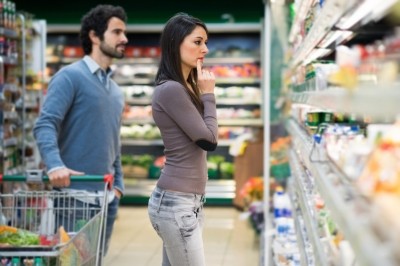The ULS (Use Less Stuff) Report
‘Over the past 20 years, packaging has evolved to effectively deliver on sustainability’

In its study, ‘A study of packaging efficiency as it relates to waste prevention’, it found lightweighting continues to play a primary role in reducing packaging discards and plastics, in the form of films and flexible pouches, play important roles in significantly reducing discards per unit of product delivered.
Aluminum cans, beverage bottles
Robert Lilienfeld, editor, The ULS Report, told BeverageDaily, recovery for recycling plays an increasingly important role in the effort to reduce packaging discards and overall solid waste levels.
“This is especially true for steel and aluminum cans, beverage bottles made from PETE, HPDE and glass, and paperboard cartons,” he said.
“These materials are collectively recycled at a 34.2% rate today, up significantly versus 25.7% in 2005. In fact, the level of primary packaging recycling is now equal to the recovery rate for total waste, and is the primary reason that the total recovery rate increased from 31.4% in 2005 to 34.3% today.”
Lilienfeld added social trends towards more active, healthier lifestyles increase the need for products that provide convenience and weight control. Resulting packages can lead to inefficiencies, because they need to be a smaller size or have increased functionality for ready-to-eat, ready-to-serve, and out-of-home products.
“In general, the environmental impact of food is up to 10 times greater than the impact of its packaging. So, a bit more portion control or ready-to-eat food packaging can actually reduce waste, as these packages ensure that the food inside is actually eaten rather than thrown away.”
However, the report found packaging efficiency is only part of the overall sustainability equation. For example, a less efficient package that does a better job of reducing food waste, improving chances for reducing caloric intake, or eliminating the need of ancillary product use (e.g., disposal spoons or straws) may actually be a better option than a more efficient container.
Flexible plastic & refillable packaging
Consumer goods marketers and retailers should be encouraged to develop and promote flexible plastic and refillable packaging, concentrates, dry mixes, and larger sizes for appropriate applications.
“While flexible plastic packaging can cost more to produce, the savings in transportation energy generated across the supply chain can be used to offset this increase,” said Lilienfeld.
“Consumer goods marketers, retailers, and material producers should coordinate efforts to increase recycling of packaging used in out-of-home applications. This is especially true for smaller size beverages such as water, soft drinks, and juices.
“PETE, HDPE, steel, and aluminum have both the value and infrastructure in place to effectively reduce the use and impact of virgin materials. Consumers need to be motivated to either bring these packages home for placement in their recycling bins, or provided with easy-to-find, out-of-home, recycling collection sites.”
The report found packaging decisions are driven by consumer perceptions and lifestyle requirements. In many cases, these factors lead to more packaging, rather than less.
For example, it claims consumers tend to equate quality with quantity; a 500ml bottle of store brand water weighs 8.8g and has a retail price of $0.13. A 500ml bottle of a typical “performance brand” weighs 27.3 grams and retails for $1.19.
While the latter’s heavier weight and higher price may increase quality perceptions among users, they generate greater environmental and economic costs for society.
The ULS Report examined over 300 containers in 56 grocery categories to determine the amount of packaging required to deliver a given amount of product. Study methodology gave credit for source reduction, recyclability, and use of recycled materials.
The methodology, findings, and conclusions were reviewed by the Laboratory of Manufacturing and Sustainability (LMAS) at the University of California, Berkeley.
Source: The ULS Report
Title: ‘A Study of Packaging Efficiency As It Relates to Waste Prevention’
Date: January 2016



















